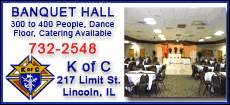 Since 1950, there have been only five times when January got it wrong in a big way. That gives it an accuracy ratio of 91.4 percent. Throw in the 10 years since then when the market hasn't moved much in a year, and January is still accurate 74.1 percent of the time, according to the "Stock Trader's Almanac," a book that tracks market trends.
Since 1950, there have been only five times when January got it wrong in a big way. That gives it an accuracy ratio of 91.4 percent. Throw in the 10 years since then when the market hasn't moved much in a year, and January is still accurate 74.1 percent of the time, according to the "Stock Trader's Almanac," a book that tracks market trends.
But after a horrendous 2008, some Wall Street veterans say 2009 isn't a time for looking at past trends.
"We're in a different world. If the last two years have taught us anything it's to be very skeptical about statistical predictions of markets," said Jerry Webman, chief economist at Oppenheimer Funds Inc. in New York.
Whether the January Barometer holds up this year will depend on the impact of government efforts to help lift the economy. If stimulus plans and capital infusions for banks do revive the economy, the stock market is expected to rally and could end the year with an advance.
"The axioms that always held true are out the window," said Brian Battle, vice president of trading at Performance Trust Capital Partners in Chicago. He noted it wasn't too long ago that many investors and consumers alike believed housing prices would always rise.

"This year is so different. You have to go back to the 1930s to find this kind of dislocation," he said. "It's a coin toss."
He's not the only one questioning the January Barometer.
"I don't think any of those things count anymore. This is unprecedented, what we're dealing with here," said Robert B. MacIntosh, chief economist at Eaton Vance Investment Management in Boston.
Still, it's easy to understand why investors would look to anything that could hint where stocks might head. Especially in 2009.
"It's going to be quite a rabbit out of the hat to be positive this year," said Jeffrey Hirsch, editor of the "Stock Trader's Almanac." His father, Yale, developed the January Barometer idea in 1972.
Even a flat year wouldn't seem so bad after the 38.5 percent plunge in the S&P 500 index in 2008. But Hirsch worries about another steep drop in the index, which is a yardstick for the overall stock market.
"Initially, the scary part is that all the down Januarys were followed by a new or continuing bear market, or a flat year," he said. Hirsch noted that only 1956 was an exception; it ended flat after a losing January.